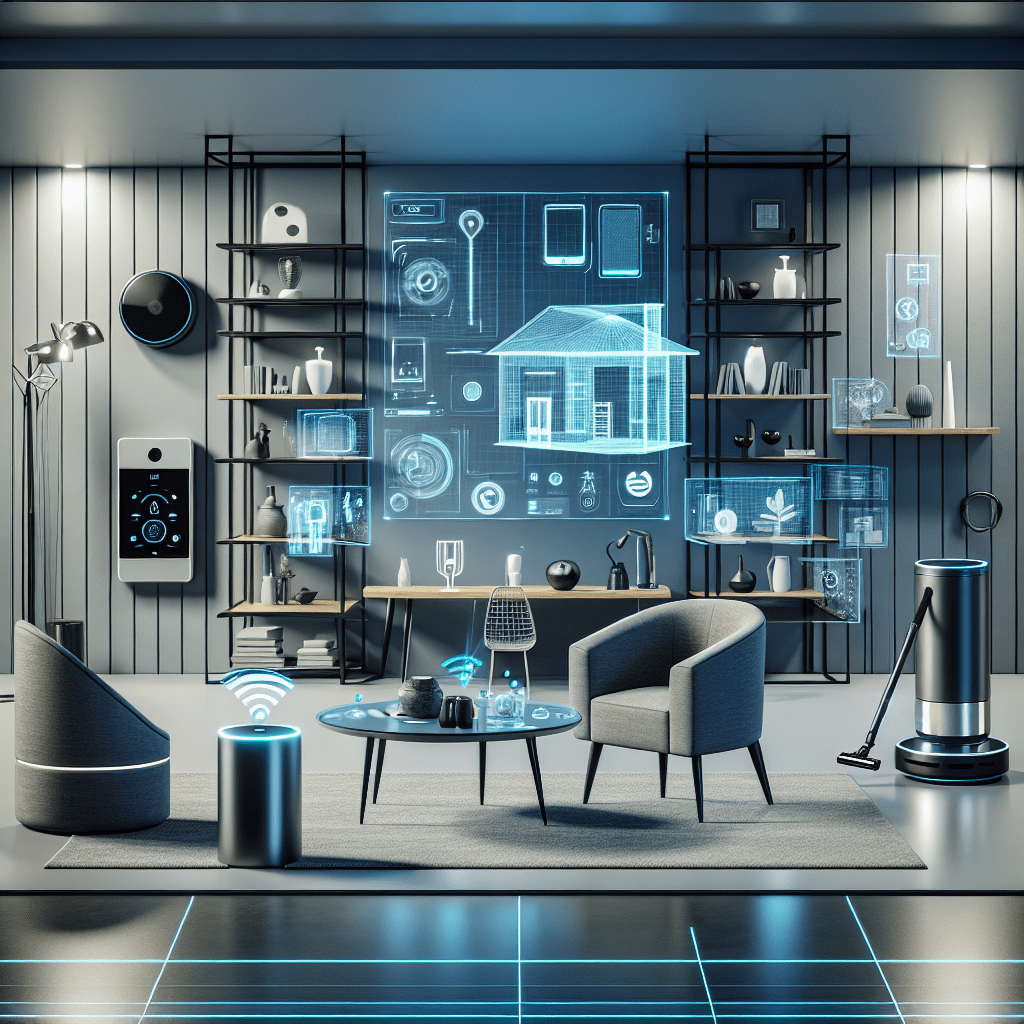In the age of technology, creating a smart home has never been easier. Smart spaces utilize artificial intelligence (AI) to enhance the design and functionality of our living environments. AI can assist in everything from optimizing energy consumption to providing real-time feedback on Interior Design choices. This article explores how you can leverage AI to create effortless home designs that are both practical and aesthetically pleasing.
What Are Smart Spaces?
Smart spaces refer to living environments that integrate technology, particularly AI, to augment the user’s experience. These spaces are equipped with smart devices, systems, and applications that can communicate and collaborate to create a more harmonious living environment. Key characteristics of smart spaces include:
- Automated Systems: Smart lighting, heating, and security systems that adapt to user habits.
- Data-Driven Insights: AI algorithms analyze user behavior to make personalized recommendations.
- Seamless Integration: Different devices and platforms work together for an enhanced user experience.
The Role of AI in Home Design
Artificial intelligence plays a pivotal role in modern home design. By analyzing vast amounts of data, AI can help homeowners make informed design decisions. Here are several ways AI is transforming home design:
1. Personalized Design Recommendations
AI can analyze your preferences and existing living space to offer tailored design suggestions. By studying patterns in color, texture, and furniture arrangement, smart design applications can recommend modifications that resonate with your style.
2. Virtual Design Assistants
Many AI-powered apps act as virtual interior designers. They can help visualize changes in real-time and provide 3D renderings of different design concepts without the need for physical alterations.
3. Efficient Space Planning
AI can assist in optimizing space usage by analyzing dimensions and suggesting the best layout. Whether it’s maximizing storage in a small apartment or creating an inviting layout for entertaining guests, AI’s insights can lead to innovative solutions.
Key Technologies Shaping Smart Spaces
The construction of smart spaces relies on several key technologies that enhance both design and functionality:
1. Internet of Things (IoT)
The IoT connects various devices and appliances within your home to create a cohesive ecosystem. Smart speakers, lighting, thermostats, and security systems can all work together to automate tasks and provide seamless integration.
2. Machine Learning
Machine learning allows AI systems to learn from user data, improving the system’s recommendations and functionality over time. This means the more you interact with your smart home devices, the better they become at predicting your needs.
3. Augmented Reality (AR)
AR helps in visualizing design changes before actual implementation. Users can project digital furniture or decor into their physical space, enabling smarter choices that suit their aesthetic preferences.
Steps to Create Your Smart Space
Now that you understand the role of AI in home design, here is a step-by-step guide to creating your smart space:
Step 1: Define Your Goals
Consider what you want to achieve with your smart space. Do you want to improve energy efficiency, enhance comfort, or create a stylish ambiance?
Step 2: Choose Your Technology
Select smart devices that align with your goals. For instance, if energy savings are a priority, invest in smart thermostats and lighting that adjust based on usage patterns.
Step 3: Plan Your Layout
Use AI-powered design tools to experiment with layouts and ensure that your space feels inviting and functional. Focus on flow, accessibility, and aesthetics.
Step 4: Implement Automation
Set up automation routines using your smart devices. For instance, program your lights to dim at a certain hour or your thermostat to adjust based on your daily schedule.
Step 5: Regularly Monitor and Adjust
One of the most significant advantages of smart spaces is their adaptability. Use app solutions to analyze data from your devices regularly and adjust preferences based on findings.
Benefits of Using AI in Home Design
The integration of AI in home design provides numerous benefits, including:
- Time Efficiency: AI can significantly speed up the design process, allowing for quicker decisions and implementations.
- Cost Savings: Thoughtful design choices can prevent costly mistakes and lead to savings on utility bills.
- Enhanced Comfort: A smart home adapts to your preferences, creating a more comfortable living environment.
Conclusion
AI is revolutionizing home design by providing innovative solutions that allow for personalized and efficient spaces. By utilizing smart technologies, homeowners can create environments that not only look beautiful but also function seamlessly. Whether you’re looking to automate mundane tasks, visualize design changes, or optimize your space, there has never been a better time to explore the potential of smart spaces. By following the steps outlined in this article, you can embark on your journey toward an effortlessly designed home that caters to your unique lifestyle.
FAQs
What is a smart space?
A smart space is a living environment equipped with technology, particularly AI, that enhances functionality and user experience through automation and data-driven insights.
How does AI improve home design?
AI enhances home design by offering personalized recommendations, improving space planning, and providing virtual design tools that enable users to visualize changes.
Are smart home devices expensive?
While initial investments can vary, many smart home devices can lead to long-term savings on utilities, making them cost-efficient over time.
Can I create a smart space on a budget?
Yes, there are budget-friendly smart devices and apps available that can help you start creating a smart space without breaking the bank. Focus on essential devices first and expand as your budget allows.
What are some popular AI-powered home design tools?
Some popular AI-powered design tools include Houzz, RoomGPT, and HomeByMe, which allow users to visualize design changes in real-time.
#Smart #Spaces #Utilizing #Effortless #Home #Design

